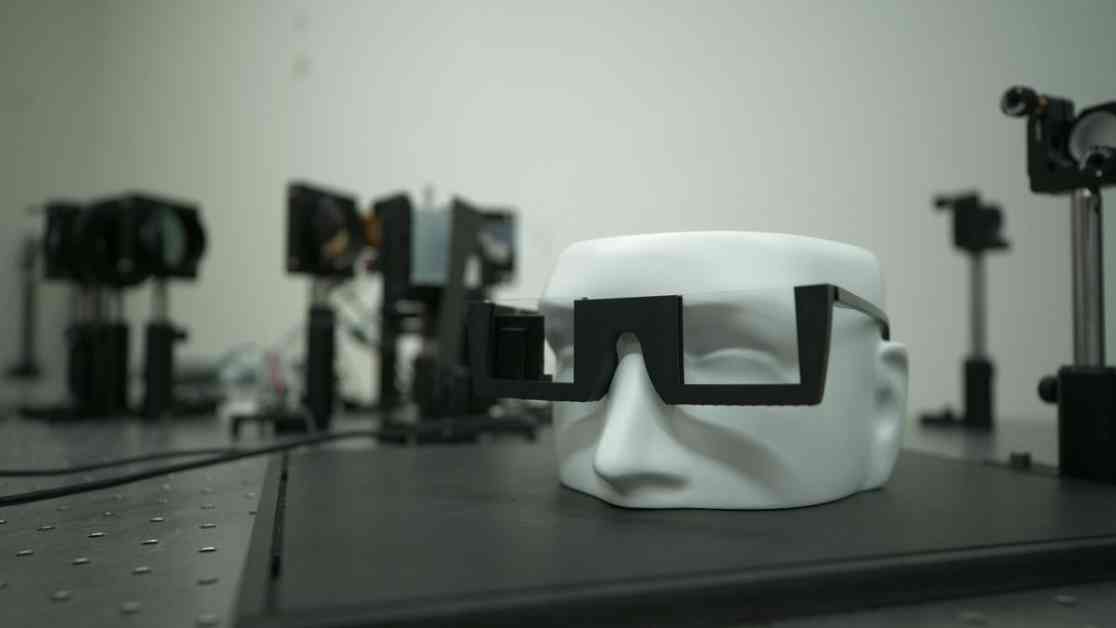A team of scientists at Stanford University has developed a groundbreaking pair of glasses that could revolutionize the future of virtual reality (VR) and augmented reality (AR) headsets. Led by associate professor Gordon Wetzstein, the team at Stanford’s Computational Imaging Lab has created a prototype of compact augmented reality glasses that display full-color 3D images using a nanophotonic metasurface waveguide embedded in the glass surface.
The glasses, which appear to be standard lenses, are designed to provide a perceptually realistic experience that is very similar to the real world. According to Wetzstein, the vision is to create something that is indistinguishable from a real object. While the prototype has not been tested on human eyes yet, the team envisions a wide range of potential uses for this technology beyond gaming and entertainment.
For example, the glasses could be used by surgeons to plan delicate or complex surgeries, or by airplane mechanics to learn how to work on the latest jet engines. The possibilities are endless, and the team is focused on further developing the glasses to make them more compact, power-efficient, and suitable for human testing in the future.
The prototype glasses are currently attached to a model human head, weighing about half a pound, less than half the weight of the Apple Vision Pro mixed reality headset. The team’s innovative approach to display technology has the potential to transform the way we interact with the virtual and augmented worlds, opening up new possibilities for various industries and applications.
As technology continues to advance, the future of AI glasses looks promising, offering a glimpse into tomorrow’s tech that could shape how we experience and interact with the world around us. With ongoing research and development, the team at Stanford is paving the way for a new era of immersive and realistic augmented reality experiences that could soon become a part of everyday life.














